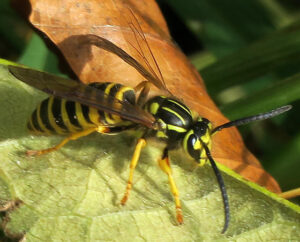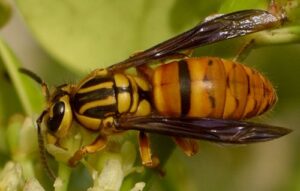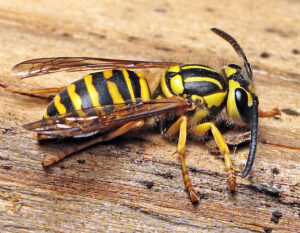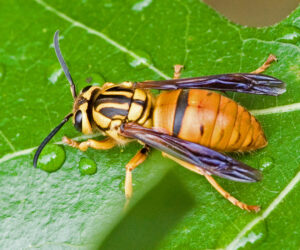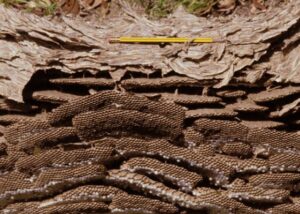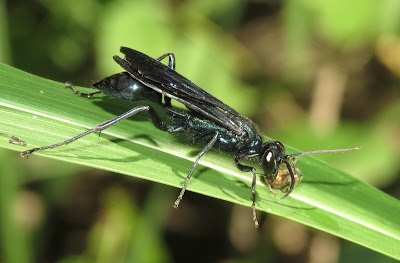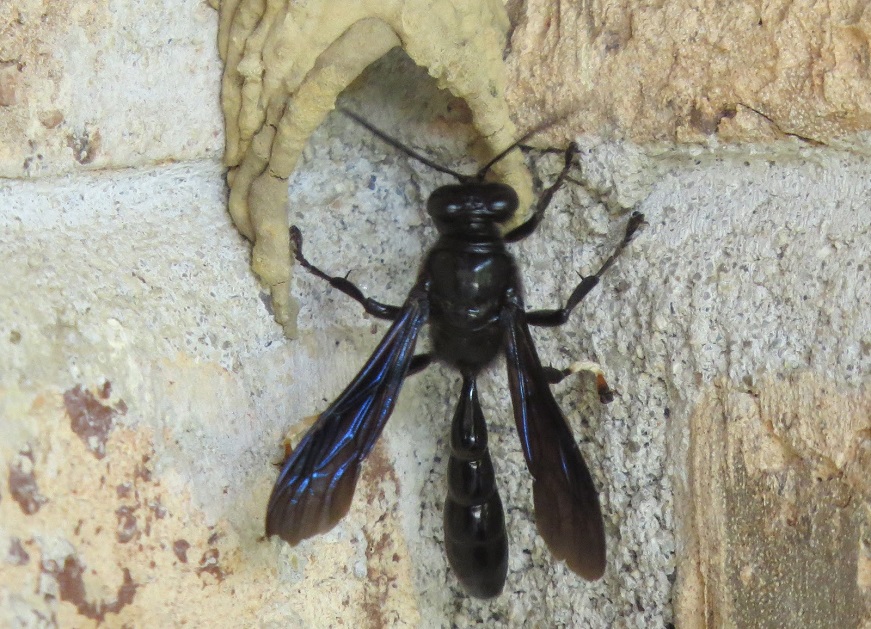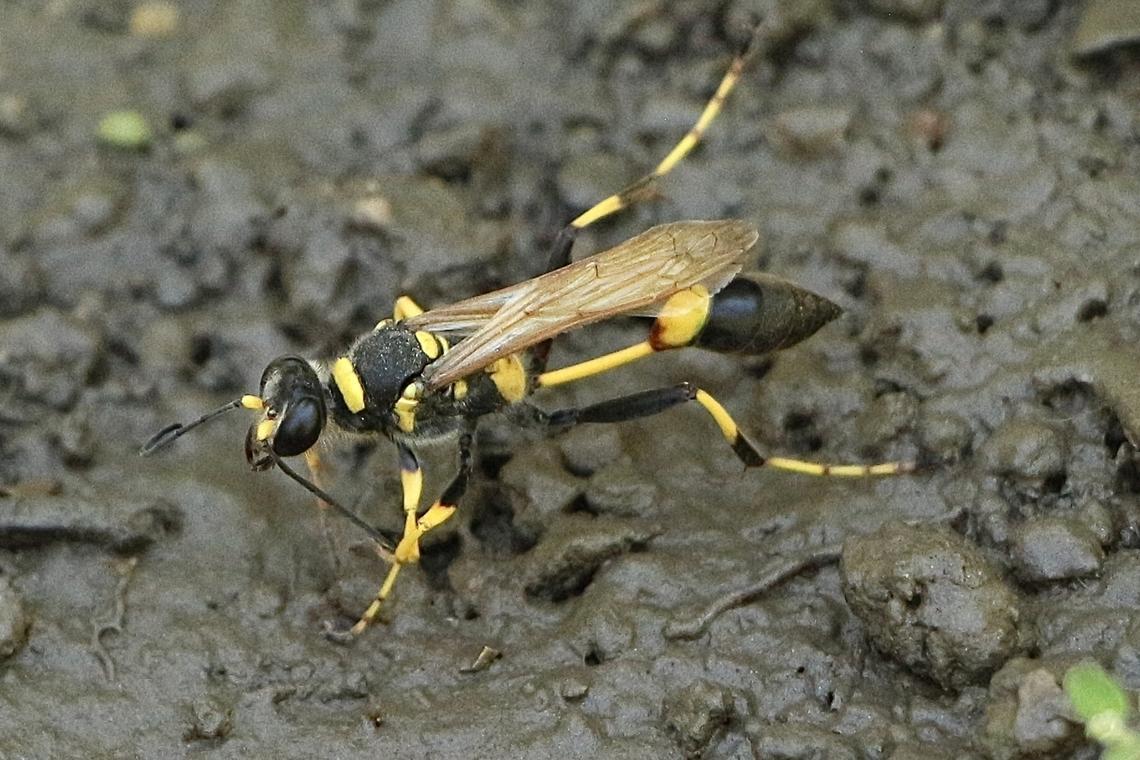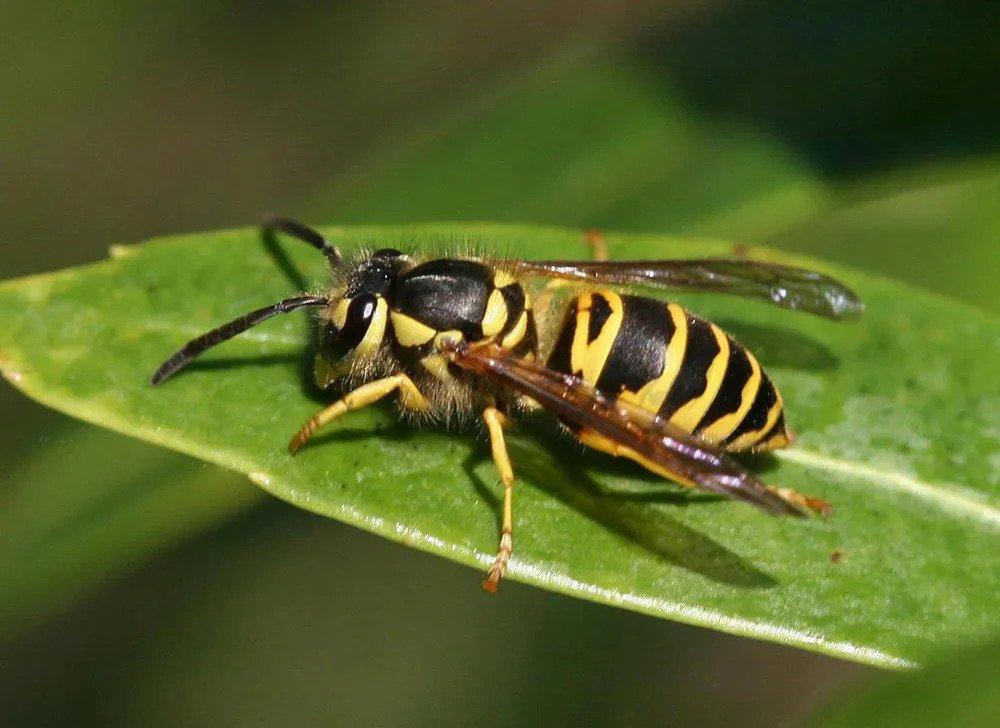Southern Yellowjacket (Vespula squamosa)
Updated on
06/02/2023The southern yellowjacket is a social wasp that can be identified by its unique black-and-yellow pattern and orange-colored queen. Entomologist Dru Dury discovered the species around 1770. They use pheromones as an alarm signal against predation and a sexual attractant. Their painful, venomous stings have led them to be considered pests. The southern yellowjackets are parasites of the eastern and widow yellowjackets. They offer parental care to their offspring.
Scientific Classification
- Class:Insecta
- Order:Hymenoptera
- Family:Vespidae
- Genus:Vespula
- Species:V. squamosa
Conservation Status
Description and Identification
The average size of the wasp is 0.5 in (13 mm). It has a black, hairless body
with yellow stripes all over it. Its wings are transparent. The queens are significantly bigger than the workers and males. Plus, the queen has fewer black marks and more orange or brown coloration. An identifying trait of the species is two stripes on the scuta.
Distribution: It ranges from eastern North America southwards to Central America.
Habitat: Areas with fairly warm weather, and tropical climates, in some cases.
Do They Bite/Sting: Yes.
Lifespan: Up to 1 year.
Predators: Skunks, bears, raccoons, badgers, and other mammals.
Behavior and Characteristics
Diet
It consumes animal carcasses and live insects like spiders and caterpillars. The larvae feed on insects and nectar.
Colony Cycle
The colonies are mostly annual but can be perennial, depending on the climate. Polygyny occurs in many perennial nests.
The workers don’t survive the winter in the colonies, but the queen does, and in spring, she is ready to lay more eggs. She takes over a small colony of the eastern or widow yellowjacket to start an annual colony in late May or early June. About 85% of colonies begin as a parasitic infringement, while the remaining 15% are independent colonies. The acquisitions can be violent, as testified by dead queens found in the nests. Mainly the southern yellowjacket queens fight among themselves for nest control. Then new colonies are built around the host nest, increasing its size.
The queen begins nest-building by building queen cells and laying eggs. They hatch into larvae that pupate within a month. When more female workers are produced in late July or early August, the colony increases rapidly in size as worker cell construction kicks off. The workers build smaller cells (4-5 mm wide), while the queen’s are bigger (7 mm wide). The maximum number is reached in October and December, marking the end of the seasonal colony cycle. Then the queen hibernates to start a new colony the following year.
A perennial or overwintering colony is much larger than the annual one as it is built for and lived in for several years. The nest volume is about 50-60 liters, and it can contain as many as 60,000 cells. It has lower production of the winter brood and continuous production of the reproductives through the winter. There are 6 to 100+ reproductive queens housed here. They reproduce within the colony instead of leaving it. There is stiff competition among the queens to take over the nest.
Nest-building
The insect builds huge, multi-comb nests in non-natural places like parks, yards, and roadsides. However, some nests are also found in pine forests. Most of them are underground, though some are found in walls, above the ground, near the nests of eastern yellowjackets.
The nests are made from chewed vegetable fibers and can contain 9000 to more than 450,000 cells. While most nests are annual, multiple-season nests have been found in the southern coastal areas of the range, where the shelters can survive the winter.
The workers can communicate with pheromones to coordinate possible attacks on any threat to the nest. Disturbing a nest can result in multiple stings by the workers. The queen produces pheromones to sexually attract males as her main purpose is to successfully mate and populate a new nest with workers, males, and females the next season.
Source
bugguide.net, austinbug.com, obsvweb1.ou.edu, rescue.com




